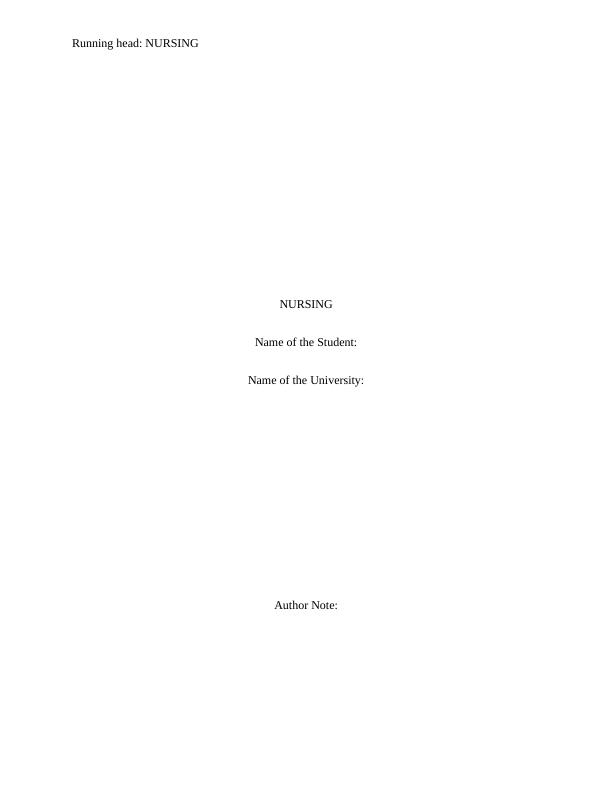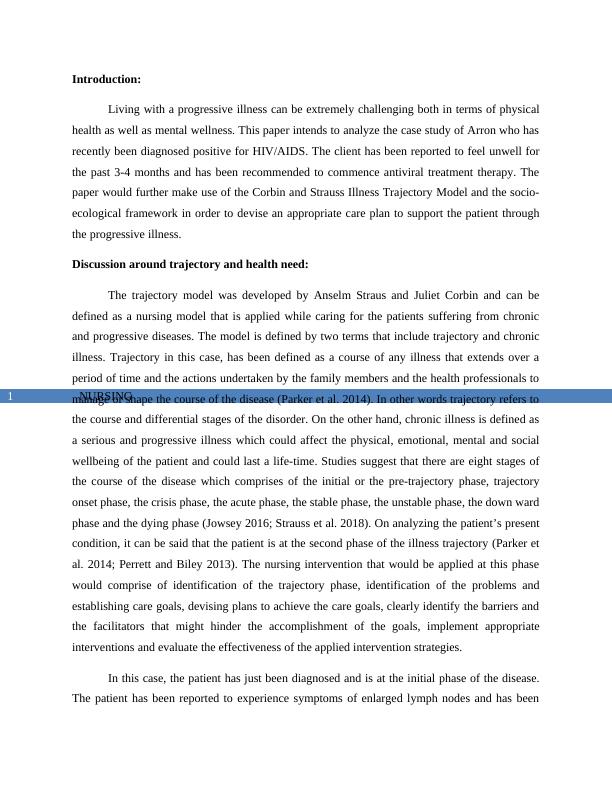Analyzing the Case Study of Arron: Living with HIV/AIDS
Apply the Corbin and Strauss Model of Care to practice by demonstrating clinical decision making and care coordination for a person living with progressive illness.
8 Pages2751 Words38 Views
Added on 2022-12-29
About This Document
This paper analyzes the case study of Arron who has been diagnosed with HIV/AIDS and discusses the trajectory model and socio-ecological framework for devising a care plan.
Analyzing the Case Study of Arron: Living with HIV/AIDS
Apply the Corbin and Strauss Model of Care to practice by demonstrating clinical decision making and care coordination for a person living with progressive illness.
Added on 2022-12-29
ShareRelated Documents
End of preview
Want to access all the pages? Upload your documents or become a member.
Palliative Case Study: Management of Increased Risk of Infection in Breast Cancer Patient
|9
|2414
|59
Social-Ecological Model Offers New Approach
|10
|2776
|31
Chronic Illness Management - Case Study of Mary Ellen
|4
|527
|93
Nursing Care For People With Chronic Illness docx.
|7
|1484
|18
Palliative Care for COPD Patients: Nursing Assignment
|8
|2003
|406
Primary Healthcare Nursing Roles in Prevention of HIV/AIDS
|9
|3309
|53



